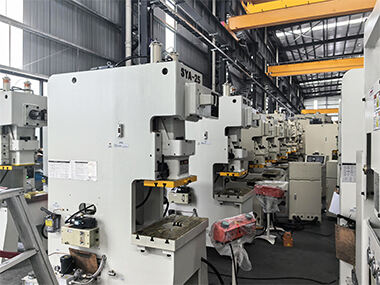Selecting the correct punch press is one of the most important decisions you make that affects the productivity, efficiency, and profitability of your shop long term. However, purchasing this is full of possible misunderstandings that can result in expensive errors, unrealized potential or frustrating constraints. So, what are some of the myths:
1. "Bigger Tonnage is Always Better"
Misunderstanding: One would think that the ultimate aim is maximum tonnage and that bigger presses will easily cope with the smaller jobs.
Reality: Giant presses do have their disadvantages: they cost more to buy, take up more space, need more energy and they may exert too much force damaging fine components or tooling. Solution: Be able to accurately compute your maximum needed peaking tonnage on the toughest jobs you anticipate most (based on type of material, thickness, hole and edge proximity). Select a press that has enough (though not too much) overhead (usually 15-25%) to also be safe and future-proof.
2. Focusing Solely on the Sticker Price
Misunderstanding: Using the price of the initial machine almost as the sole basis of the purchase decision.
Reality: TCO has much more to it:
Tooling and Dies: Tooling feasibility and cost of tooling.
Energy Before the use of new machines, more or less efficient machines are expensive to operate.
Maintenance - Complexity and parts and service availability/cost.
Downtime: Machines that prove to be unreliable or service are very difficult have massive hidden expenditures.
Operator Requirements & Training: The ease of use has an effect on efficiency.
Phase: Evaluate TCO. What looks like a modest increase in the initial investment cost to buy a robust, efficient and serviceable machine may translate into gigantic savings in the long run.
3. Neglecting Tooling Compatibility & Flexibility
Misunderstanding: Believing that any press can easily fit any of the common tooling or the speed and flexibility of tooling changeover are overemphasized.
Reality: There are wide differences in tooling systems (e.g., turret based vs. rail based). Lock-in creates an illusory freedom, at a high cost: proprietary systems, exclusivity and lack of future options. High-mix environments are fatal at killing productivity through slow changeovers.
Solution: As much as possible, use prioritized presses that accept widely available standardization of tooling. Calculate the ease and swiftness of tool trading (automatic indexing, rapid-change arrangements). The size or capacity of the turret or tool station must fit your part mix requirements.
4. Underestimating Automation & Integration Needs
Misunderstanding: Possibility to consider only the standalone punch press without using the positive aspects of material handling automation (loaders/unloaders) and/ or without integration with CAD/CAM software and factory systems.
Reality: Manual loading/unloading encumbers throughput and cost of labor. The absence of software integration forms a bottleneck in the programs and the flow of data. Automation in the future may prove a challenge or impossible.
Solution: Be straight and realistic in real-time and projected levels of production and the working limitation. Select a press that is ready to automate (standardized interfaces, mounting points). Comes with ease of compatibility to your CAD/CAM software to work efficiently with your nesting and programming.
5. Ignoring Service, Support, and Training
Misunderstanding: They presume that all manufacturers will provide similar levels of service, support and training and weight their buying decisions heavily in favour of a low price at the expense of these crucial elements.
Fact: Downtime is very costly. Bad technological backup, erratic procurement of spares, or omission of training paralyzes operations. A low-priced machine is extremely costly when it is not working.
Answer: Find out the reputation of the service that is being offered by the manufacturer in your area. Learn the warranty term, availability of the parts and average turnaround time. Consider the price, as well as the quality of accessible operator and maintenance training programs. Select a partner rather than a vendor.
6. Overlooking Future Needs & Scalability
Misunderstanding: Purchasing a press that is the right size to meet the today job requirements only and cannot expand or diversify.
Reality: The needs of business are changing. A machine (in terms of tonnage/bed size/tooling capacity/speed) can soon be overwhelmed by new products, new materials, or higher volumes.
The solution: Be strategic in your thought. What are the 3-5 years needs that you may have? Does the press work with anything a little thicker than that or bigger sheet size? Does speed or automation have potential headroom? Scale up reasonably.


